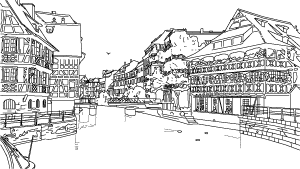|
| I am interested in many-body physics in two-dimensional electron systems (2DESs).
In particular, I investigate electron spin states in a quantum Hall system by resistively-detected nuclear magnetic resonance.
Recently, I started research on plasmon transport in GaAs/AlGaAs 2DESs or graphene using time-resolved transport measurement.
|
- Plasmon transport in graphene and GaAs/AlGaAs 2DESs
- Quantum Hall effect
 clear clear
- Shot noise generated by graphene p-n junctions in the quantum Hall effect regime
N. Kumada, F. D. Parmentier, H. Hibino, D. C. Glattli, and P. Roulleau
Nature Commun. 6, 8068 (2015).
Abstract--
Graphene offers a unique system to investigate transport of Dirac Fermions at p-n junctions.
In a magnetic field, combination of quantum Hall physics and the characteristic transport across p-n junctions leads to a fractionally quantized conductance associated with the mixing of electron-like and hole-like modes and their subsequent partitioning.
We proposed and verified that the mixing and partitioning at a p-n junction works as an electronic beam splitter by measuring shot noise.
- Unraveling the Spin Polarization of the nu = 5/2 Fractional Quantum Hall State
L. Tiemann, G. Gamez, N. Kumada, and K. Muraki
Science 335, 828 (2012).
Abstract--
The fractional quantum Hall (FQH) effect at filling factor nu = 5/2 has recently come under close scrutiny,
as its ground state may possess quasiparticle excitations obeying non-Abelian statistics, a property sought
for topologically protected quantum operations.
However, its microscopic origin remains unknown, and candidate model wave functions include those with undesirable abelian statistics.
We show, by using resistively detected NMR, the system to be fully polarized, which lends strong support for the nu = 5/2 state being non-Abelian.
- Low-frequency spin fluctuations in skyrmions confined by wires: Measurements of local nuclear spin relaxation
Takashi Kobayashi, Norio Kumada, Takeshi Ota, Satoshi Sasaki, and Yoshiro Hirayama
Phys. Rev. Lett. 107, 126807 (2011).
Abstract--
We investigate low-frequency electron spin dynamics in a quantum Hall system with wire confinement by local nuclear spin relaxation measurements.
We show that skyrmions exist inside the wire for both sides of the local filling factor nu_wire = 1.
We also show that the fast nuclear spin relaxation by skyrmions is suppressed in a certain range of skyrmion density.
This suggests that the skyrmion crystal melts into the skyrmion liquid by the wire confinement.
- Skyrmion Effect on the Relaxation of Spin Waves in a Quantum Hall Ferromagnet
D. Fukuoka, K. Oto, K. Muro, Y. Hirayama, and N. Kumada
Phys. Rev. Lett. 105, 126802 (2010).
Abstract--
Spin relaxation of two-dimensional electrons in a GaAs/AlGaAs quantum well was studied by time-resolved Kerr
rotation measurements using a two-color pump and probe technique.
By tuning the pump and probe lights to the lowest optical transition, an intrinsic
filling factor dependence of spin relaxation is obtained.
The relaxation time of the spin wave presents a sharp peak at odd filling factors, accompanied by dips on both sides of it.
The peculiar filling factor dependence of the spin-wave relaxation around quantum Hall ferromagnets can be explained
by the interaction between the spin wave and Skyrmion.
- Spin Dynamics of Two-Dimensional Electrons in a Quantum Hall System Probed by Time-Resolved Kerr Rotation Spectroscopy
D. Fukuoka, T. Yamazaki, N. Tanaka, K. Oto, K. Muro, Y. Hirayama, N. Kumada, and H. Yamaguchi
Phys. Rev. B 78, 041304(R) (2008).
Abstract--
Time-resolved Kerr rotation spectroscopy reveals spin dynamics of two-dimensional electrons in a quantum Hall system.
The spin relaxation time and g-factor depends on Landau level filling factor.
In particular, around nu=1, the spin relaxation time is strongly suppressed.
We suggest that the suppression of the relaxation time is related to photogenerated skyrmions.
- Modulation of bilayer quantum Hall states by tilted-field-induced subband-Landau-level coupling
N. Kumada, K. Iwata, K. Tagashira, Y. Shimoda, K. Muraki, Y. Hirayama, and A. Sawada
Phys. Rev. B. 77, 155324 (2008).
Abstract--
We study effects of tilted magnetic fields on energy levels in a double-quantum-wel system,
focusing on the coupling of subbands and Landau levels.
- Bilayer quantum Hall state at nu=1
- Bilayer quantum Hall state at nu=2
- Bilayer quantum Hall state at nu=2/3
- Control of nuclear spins in semiconductors
- Other topics
|
 |
|
|
|